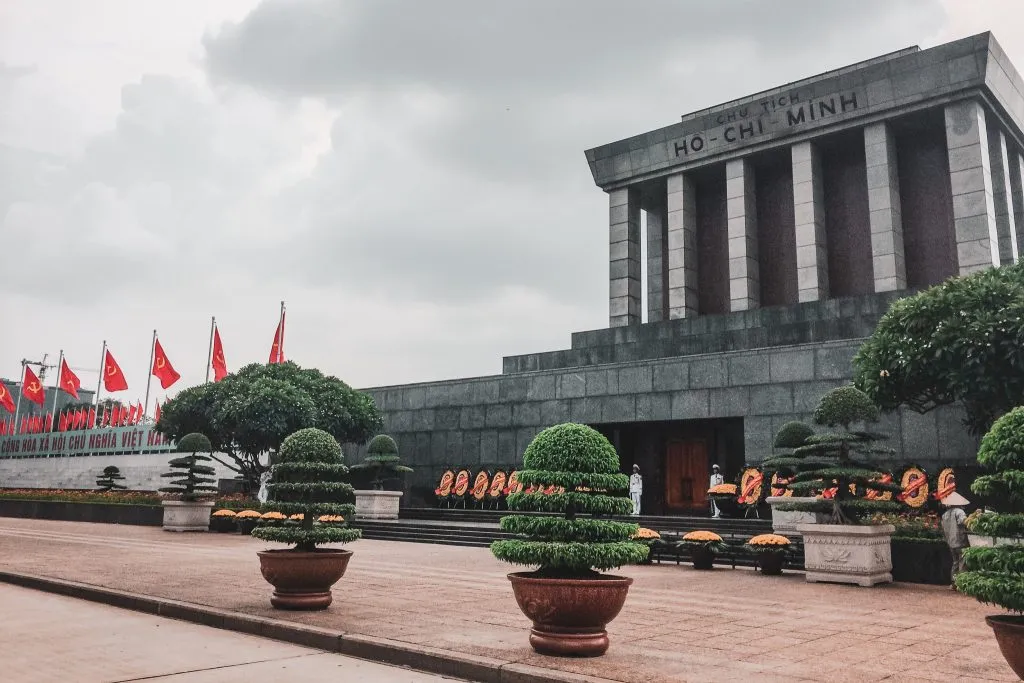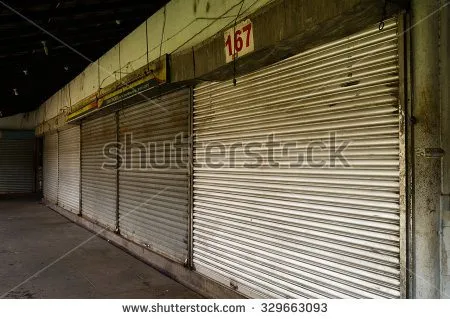Hanoi, Vietnam’s bustling capital, often gets a bad rap or is simply seen as a quick stopover on the classic backpacking route down the coast. Many travelers arrive, tick off a few well-worn sights, and quickly move on, chasing the seemingly more “Instagrammable” landscapes elsewhere. But for the adventurous Hanoi backpacker, this dynamic city is far more than just a transit hub; it’s a deep dive into organized chaos, rich history, incredible food, and a vibrant, sometimes secret, street life that rewards those who linger.
My own journey through Vietnam saw me pass through Hanoi five times, sometimes due to questionable planning, but mostly because the city had a magnetic pull. It’s a place that challenges you – from navigating relentless streams of motorbikes to embracing its unique rhythms – but it’s precisely this intensity that makes it such a rewarding destination for those traveling on a budget and looking for authentic experiences. If you’re ready to scratch beneath the surface, Hanoi promises an unforgettable adventure.
Why Hanoi is a Must-Visit for Backpackers
Stepping into Hanoi can feel like entering another dimension. The sheer volume of motorbikes, the symphony of honking horns, the pungent aromas wafting from street food stalls, and the constant ebb and flow of human activity can be overwhelming at first glance. This initial culture shock is a rite of passage for many backpackers in Southeast Asia, and Hanoi delivers it in spades. It forces you to adapt, to observe, and to learn how to exist within its unique ecosystem.
Unlike cities where tourist zones feel separate from local life, Hanoi’s energy is pervasive. The Old Quarter, the historical heart, is a living, breathing entity where ancient traditions clash and blend with modern development. This constant interplay creates a fascinating environment for exploration, offering endless opportunities to stumble upon hidden temples, bustling markets, or simply sit on a tiny plastic stool and watch the world go by.
Getting Your Bearings: Where Hanoi Backpacker Should Stay
For the vast majority of Hanoi backpacker accommodation, the Hoan Kiem district is the undisputed center. Within this district, the Old Quarter stands out as the hub of traveler activity, offering everything from budget hostels to guesthouses. The beauty here is the value; you can find a clean, comfortable dorm bed for $5 or less, often with included perks like free beer or breakfast. This makes extended stays incredibly affordable.
Hostels in the Old Quarter aren’t just cheap places to sleep; they are social hubs. They offer a chance to meet fellow travelers, get insider tips from experienced staff, and participate in organized events like pub crawls or city tours. Popular choices like Central Backpackers Old Quarter (known for its rooftop bar) or Hanoi Rock Hostel (with its large common area) provide a welcoming environment amidst the city’s intensity. Even budget hotels offer great value, sometimes costing only slightly more than a hostel dorm.
Discover the Best – Where to Go on Vacation in Florida
Your Ultimate Guide – what to eat in destin florida
Discover Fun Things to Do in LA Today
The Ba Dinh district is an alternative, placing you closer to major landmarks like museums and Ho Chi Minh’s Mausoleum. While Hanoi is surprisingly walkable if you can brave the heat and traffic, staying in the Old Quarter keeps you immersed in the city’s most atmospheric and convenient area for food, nightlife, and spontaneous exploration. For the typical Hanoi backpacker, the vibrant energy of Hoan Kiem is hard to beat.
 Rooftop bar view over Hanoi Old Quarter, popular with Hanoi backpackers
Rooftop bar view over Hanoi Old Quarter, popular with Hanoi backpackers
Beyond the Main Sights: Unique Experiences for the Hanoi Backpacker
While Hanoi does have its share of museums, temples, and historical sites, it’s true that some mainstream attractions might not blow you away compared to global icons. Ho Chi Minh’s Mausoleum is imposing and historically significant, but the accompanying museum might not captivate everyone. Similarly, the small temple on Hoan Kiem Lake, while photogenic with its red bridge, can feel underwhelming amidst crowds.
However, defining Hanoi by these static points misses the point entirely. The real magic for a Hanoi backpacker lies in embracing the experiences, the daily life, and the unexpected discoveries. It’s a city best explored by walking aimlessly, sitting, observing, and engaging with its sensory overload.
Diving into History: The Impactful Hoa Lo Prison (Hanoi Hilton)
If there is one formal attraction that profoundly impacts visitors, it is Hoa Lo Prison. Grimly nicknamed the “Hanoi Hilton” by American POWs during the Vietnam War, this site offers a stark and somber look at Vietnam’s history under French colonial rule and later during the war with America. While the focus on American POWs is presented from a specific perspective, the earlier exhibits detailing the brutal treatment of Vietnamese political prisoners under the French are particularly powerful and disturbing. It’s a challenging but essential visit for understanding modern Vietnam.
 Exhibit inside the historic Hoa Lo Prison (Hanoi Hilton)
Exhibit inside the historic Hoa Lo Prison (Hanoi Hilton)
The Pulse of the City: Hoan Kiem Lake After Dark
The area around Hoan Kiem Lake transforms as the sun sets and the brutal heat of the day subsides. What might seem like just a picturesque lake with a temple during the day becomes a lively community space in the evening. Locals spill out for exercise, dance classes, badminton games, rollerblading, or simply socializing. The surrounding streets become pedestrian-only on weekend evenings, filled with street performers, food vendors, and families enjoying the cooler air. This is where you truly see the community spirit of Hanoi, offering a wonderful opportunity for people-watching or even joining in the activities.
 Locals exercising around Hoan Kiem Lake, a glimpse into Hanoi life
Locals exercising around Hoan Kiem Lake, a glimpse into Hanoi life
The Culinary Adventure: Must-Try Food for the Hanoi Backpacker
Hanoi’s food scene is not just about eating; it’s a cultural education. Street food stalls, humble eateries, and hidden cafes serve up dishes steeped in history and local tradition. For a Hanoi backpacker, exploring this vibrant culinary landscape is non-negotiable. Don’t be afraid to pull up a tiny plastic stool on the sidewalk – that’s often where the most authentic flavors are found.
You absolutely must try Phở, the iconic Vietnamese noodle soup. While found everywhere, Hanoi is considered its birthplace. The broth is deep and complex, the noodles are soft, and it’s served with fresh herbs, lime, and chili. Bún chả is another Hanoi specialty – grilled pork served with vermicelli noodles, fresh herbs, and a dipping sauce. The aroma of the grilling pork on the streets is irresistible.
For something unique, seek out Bánh Mì, the Vietnamese baguette sandwich, a delicious legacy of French colonialism adapted with local fillings. And for a truly Hanoian drink, try Cà Phê Trứng (Egg Coffee). This rich, creamy concoction of coffee topped with whipped egg yolk is surprisingly decadent and utterly delicious. Consider taking a food tour to sample a variety of dishes with local guidance, or even a cooking class to learn how to recreate these flavors at home.
Navigating the Chaos: Crossing Streets and Daily Life
One of the most memorable (and initially terrifying) experiences for a Hanoi backpacker is crossing the road. There are traffic lights, but they often seem more like suggestions. The key is to walk slowly, steadily, and predictably. Don’t stop or make sudden movements; the motorbikes will flow around you like a river around a stone. It’s a unique dance that you quickly learn to trust.
Beyond the traffic, the sensory experience of Hanoi is intense. The sounds of hawkers, the smell of incense from temples, the vibrant colors of market stalls, and the constant movement of daily life create an intoxicating atmosphere. Embracing this intensity rather than resisting it is key to enjoying the city. You might see butchers working on the sidewalk in the early morning, or impromptu karaoke sessions erupting – it’s all part of the tapestry.
 Busy street scene in Hanoi Old Quarter showing daily life
Busy street scene in Hanoi Old Quarter showing daily life
Unlocking Hanoi’s Legendary Nightlife: A Hanoi Backpacker Guide
Hanoi has a reputation for having “strange” nightlife, particularly in the Old Quarter. This is largely due to regulations that technically require bars to close around midnight. However, for the seasoned Hanoi backpacker in the know, midnight is often just the beginning.
Beer Street (Ta Hien): The Starting Point
The focal point for many backpackers starting their night is Ta Hien Street, affectionately known as “Beer Street”. This narrow lane comes alive in the evening, crammed with tiny plastic stools, tables spilling onto the street, and vendors selling incredibly cheap Bia Hoi (fresh beer, brewed daily). The atmosphere is electric, loud, and social – perfect for kicking off an evening and meeting other travelers before deciding where the night might lead.
The Secret Behind the Metal Doors
The “strange” part comes after midnight. As the clock strikes twelve, many bars and clubs in the Old Quarter pull down their metal shutters, giving the appearance of closing. However, this is often a facade. The party continues inside, behind these seemingly closed doors, to avoid attracting official attention.
Finding these hidden spots requires local knowledge or connecting with other travelers who do. Pub crawls often guide you to the spots that stay open. Some well-known names mentioned by backpackers include:
- Hair of the Dog: Known for its vibrant, often red-lit interior and popular dance music, attracting a largely tourist crowd.
- H2O: A lively spot where you might find a mix of locals and tourists, often featuring DJs or live music and a relaxed, slightly hazy atmosphere.
- Dragonfly: A popular but often crowded spot, known for its energetic vibe despite its narrow layout, making dancing a cozy affair.
- Tom’s Bar: One of those places that might seem closed but welcomes you in after midnight, offering a more laid-back vibe where you might even get to pick the music.
The key takeaway is that Hanoi’s nightlife is far from non-existent; it just operates differently. Embrace the mystery and ask around – fellow backpackers and hostel staff are your best resources for uncovering the secret spots.
 Row of shops with metal doors closed at night
Row of shops with metal doors closed at night
Practical Tips for the Hanoi Backpacker
Navigating Hanoi successfully as a backpacker involves a few key considerations. Getting around is relatively easy once you get used to the traffic. Walking is great for exploring the Old Quarter, but for longer distances, ride-hailing apps like Grab (for motorbikes or cars) are incredibly convenient and affordable. Negotiate prices with traditional taxis or cyclos before getting in.
Vietnamese Dong (VND) is the currency. ATMs are widely available, but inform your bank before traveling. Carry small denominations for street purchases. While credit cards are accepted in larger establishments, cash is king for markets, street food, and smaller vendors.
The tropical climate means heat and humidity are constants for much of the year. Stay hydrated, take breaks, and embrace the afternoon downpours if you’re there during the rainy season. Finding places with good air conditioning (like hostels or cafes) becomes essential for respite.
Staying connected is easy. Pick up a local SIM card at the airport or a phone shop for cheap data. Wi-Fi is readily available in most cafes, restaurants, and accommodations.
While generally safe, be mindful of common scams like inflated taxi fares, pushy vendors, or pickpocketing in crowded areas. Keep your valuables secure and trust your gut. The intense energy is part of the experience, not necessarily a threat.
 Motorbikes and street vendors lining a road in Hanoi
Motorbikes and street vendors lining a road in Hanoi
Beyond Hanoi: Connections to Other Destinations
Hanoi serves as an excellent launching point for exploring northern Vietnam and continuing south. Popular next stops for a Hanoi backpacker include:
- Sapa: For stunning mountain landscapes and trekking through ethnic minority villages.
- Ha Long Bay: For iconic limestone karsts and boat trips (consider a reputable budget tour).
- Ninh Binh: Often called “Ha Long Bay on land,” offering beautiful scenery for boat trips and cycling.
- Hue: The historical imperial capital, rich in history and architecture.
- Da Nang & Hoi An: Coastal cities offering beaches, a charming ancient town (Hoi An), and delicious food.
- Ho Chi Minh City (Saigon): The southern metropolis, offering a different vibe and further historical sites.
Overnight buses and trains are common modes of transport for backpackers moving between these destinations, providing a budget-friendly (though sometimes less comfortable) way to cover long distances.
To Sum It Up…
Hanoi might not have the immediate, postcard-perfect landscapes of other Vietnamese destinations like Ha Long Bay or Sapa, nor the quaint charm of Hoi An. It’s a city that requires you to lean into its intensity, to look past the surface, and to find beauty and experience in its daily rhythm and hidden corners.
For the curious, adventurous Hanoi backpacker, this city offers a rich tapestry of culture, history, and incredible food that will challenge and reward you in equal measure. It’s a place where crossing the street is an adventure, a simple coffee is a layered experience, and the nightlife thrives behind closed doors. Instead of just passing through, give Hanoi the time it deserves, embrace its quirks, and you might just find it becomes one of your most memorable stops.
Frequently Asked Questions for the Hanoi Backpacker
Q: Is Hanoi safe for backpackers?
A: Yes, Hanoi is generally safe for backpackers. Like any large city, petty theft (pickpocketing, bag snatching) can occur in crowded areas, but violent crime against tourists is rare. Be aware of your surroundings, secure your belongings, and use reputable transport options.
Q: What is the best time of year to visit Hanoi?
A: The best times are usually Autumn (September to November) and Spring (March to April) when the weather is milder and drier. Summer (May to August) is hot and humid with potential for heavy rain, while Winter (December to February) can be cool and damp.
Q: How long should a Hanoi backpacker plan to stay?
A: While some rush through in a day or two, a minimum of 3-4 full days is recommended to experience the city’s atmosphere, explore the Old Quarter, visit key historical sites like Hoa Lo Prison, delve into the food scene, and experience the unique nightlife. Staying longer allows for a deeper immersion.
